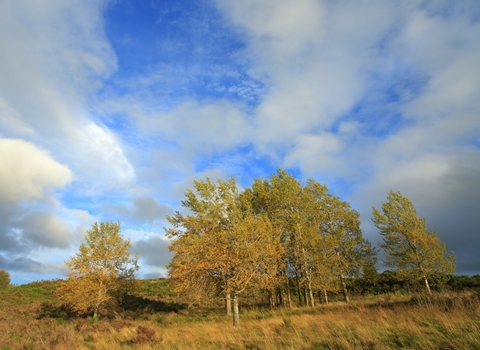
©Mark Hamblin/2020VISION

©Ferran Turmo Gort
Aspen
Aspen is a slender poplar tree that can be spotted on heathland and in woodlands, particularly in Scotland. It displays hanging catkins in spring and its fluttering leaves turn vibrant yellow in autumn.
Enw gwyddonol
Populus tremulaPryd i'w gweld
January to DecemberGwybodaeth am rywogaethau
Ystadegau
Height: up to 20mCommon.
